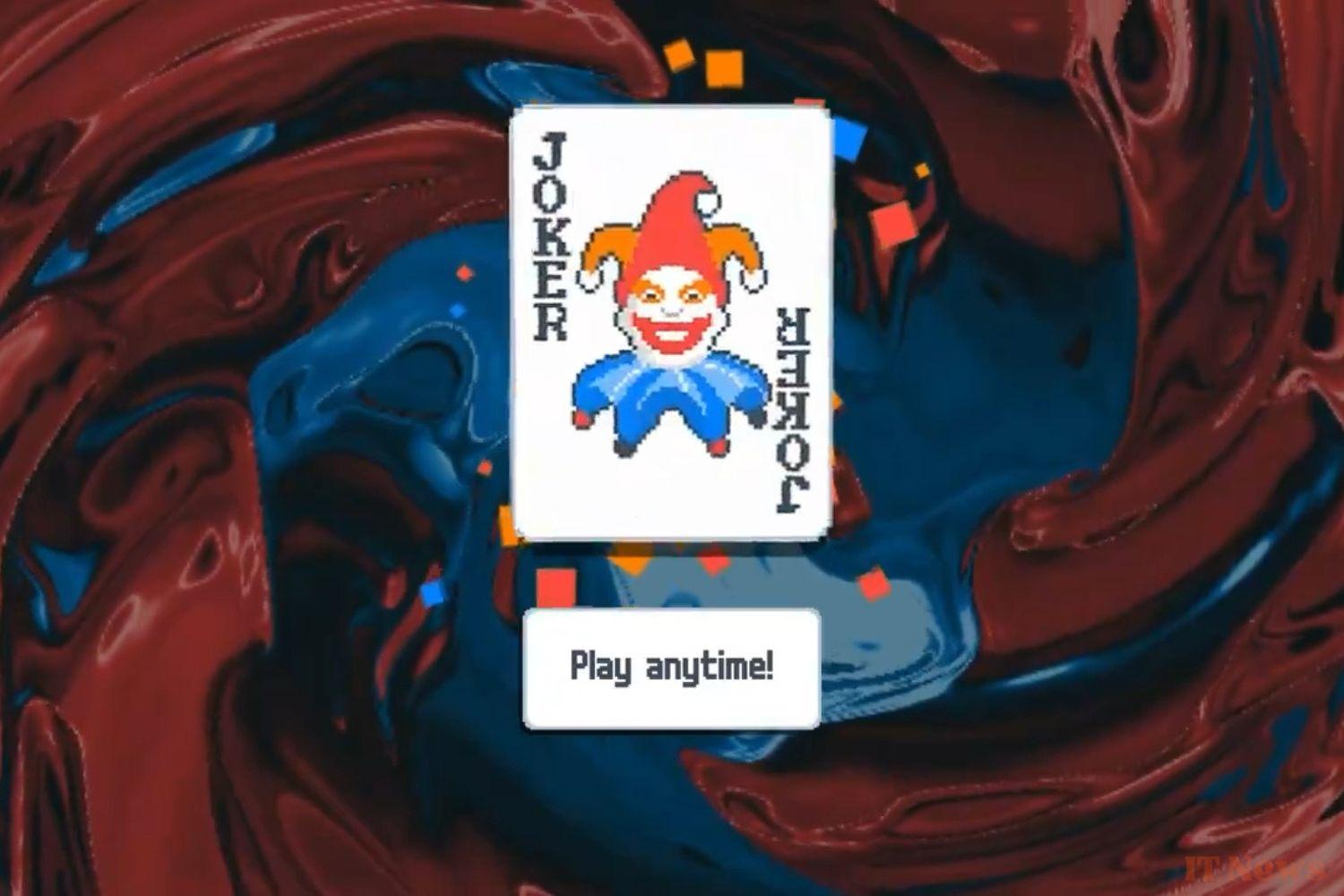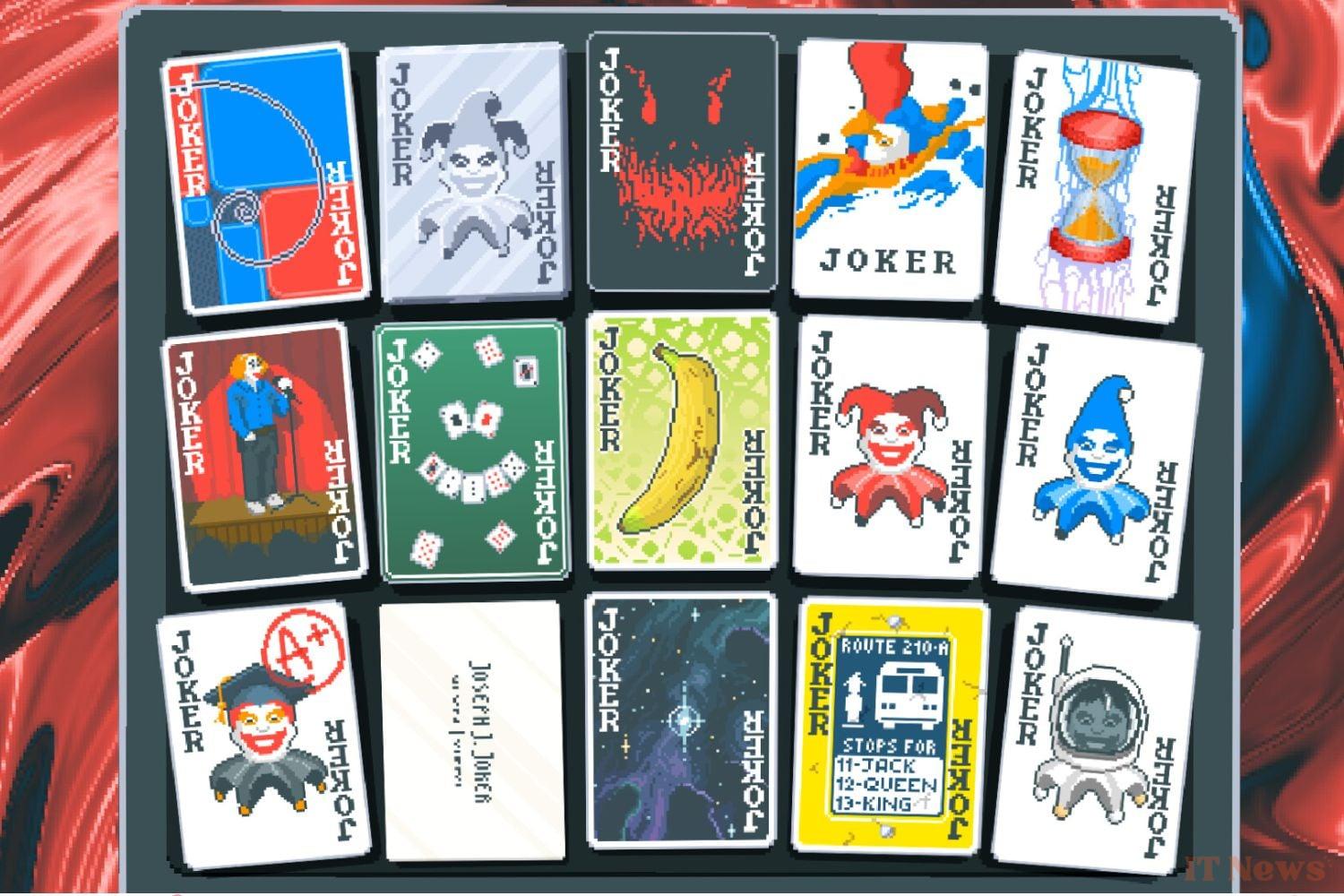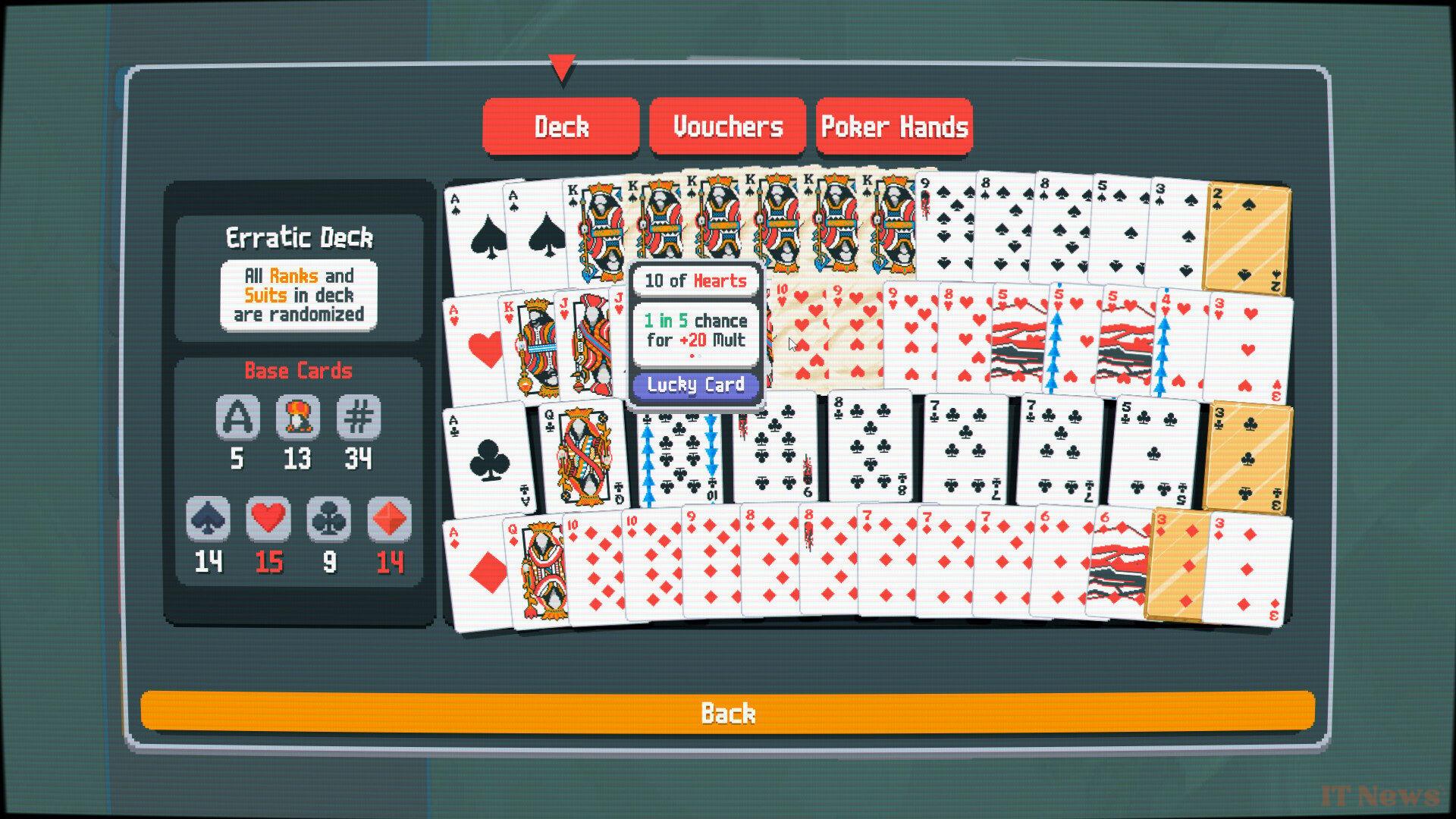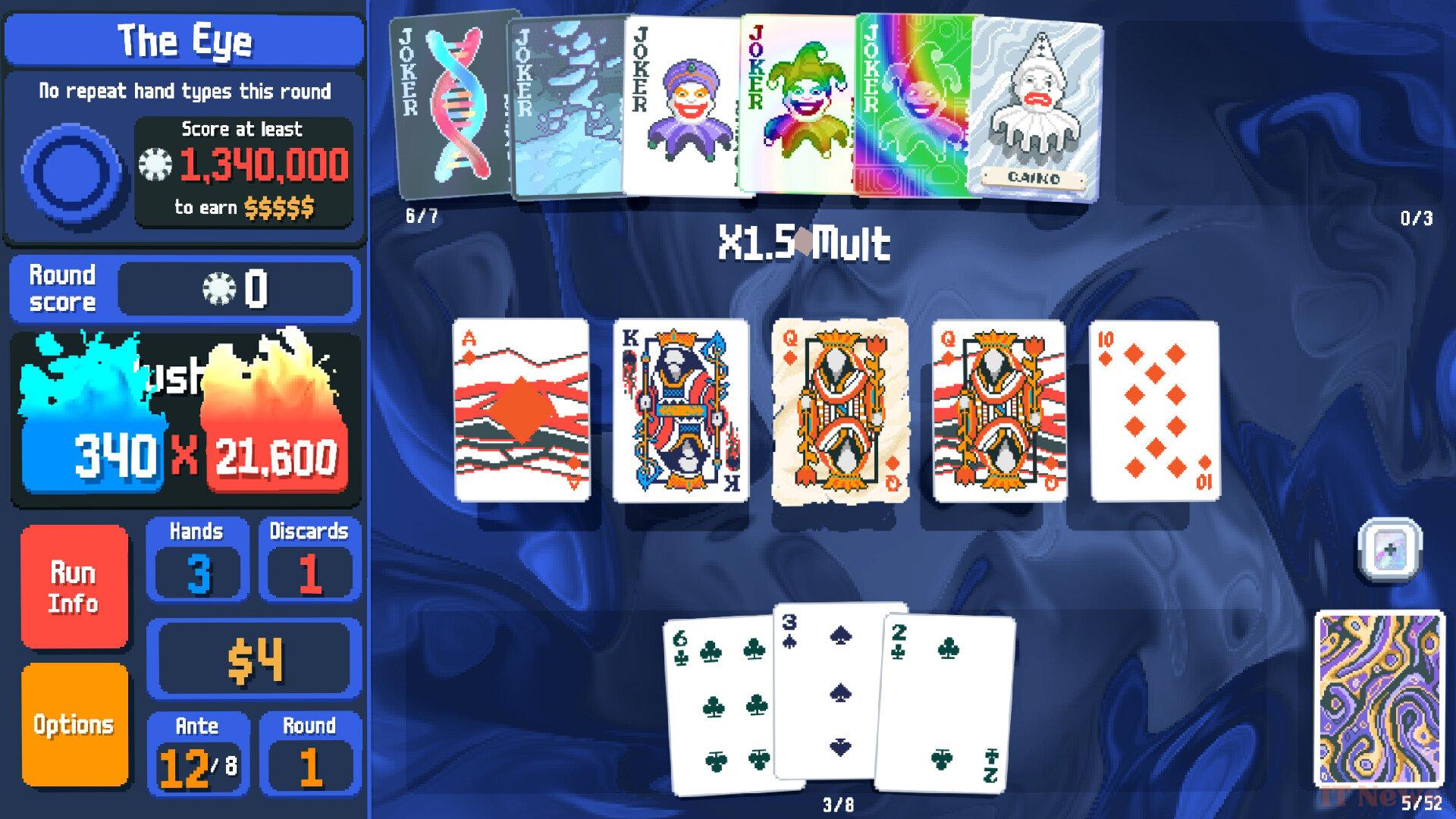Balatro has wowed the crowds with his ingenious recipe that applies the codes of roguelites to the world of poker. By cleverly and brilliantly marrying these two universes that seemed fundamentally incompatible, the game has achieved a real global success that has already made more than five million players completely addicted... and luck has nothing to do with it. The game having recently celebrated its first anniversary, it's a good opportunity to look at the recipe for this success that seems set to last.
Roguelites share a certain kinship with roguelikes, themselves derived from the legendary 1980 Rogue. The concept is simple: instead of picking up the adventure where they left off, the player starts a new one with each game, generally in an environment based on procedural generation whose nuances they must understand to go further and further with each attempt. Roguelites like Balatro take this idea and offer practically infinite replayability, but also introduce persistent progression between games, making them more accessible.
But it's also a notoriously difficult genre to design and balance, and one that many studios have failed miserably on. Developer LocalThunk, on the other hand, has been able to double down on intelligence and creativity to enhance the genre with rare virtuosity: we therefore invite you to try to understand how Balatro became the most addictive game of its generation.
A festival of synergies
One of the elements that makes roguelikes so addictive is the synergy that exists between the game's different mechanics. Hades is a great example: obtaining several complementary blessings that work well together immediately adds a good dose of fun to each run. And when you stumble upon the final piece that will transform a decent build into a weapon of mass destruction, like a Duo Blessing or a perfect Daedalus's Hammer, the whole thing becomes incredibly entertaining.
In Balatro, the 150 wild cards and tons of other systems that allow you to modify the traditional 52-card deck mean that there are an absolutely astronomical number of potential scenarios. This is a double-edged sword, because if the game were poorly designed, players would spend their time restarting games hoping to find a super-wild card that could catapult them to new heights. Many titles suffer from this problem, which has condemned tons of roguelikes to the oblivion of video games (see below). But LocalThunk has managed to avoid this pitfall with incredible virtuosity by building Balatro on the theme of poker.
Thanks to the natural diversity of the traditional 52-card deck, all the gameplay elements interact in a unique way, based primarily on mathematics — although, rest assured, there is absolutely no need to be good at math to play Balatro. Rather than making the game difficult to get into, this approach makes it fairly intuitive for new players, who will be delighted to have combined a few complementary wilds. But it also allows seasoned players to concoct an incredible number of viable strategies, some extremely exotic, on the fly. Whatever your first wilds, there are bound to be several different approaches to making them work effectively and spectacularly.
Roguelikes where all the gameplay elements interact so organically, with very little friction, are extremely rare—and there's no doubt that this has largely contributed to the game's success.
Harnessing Chance
This flexibility has also allowed LocalThunk to reduce the influence of another often problematic element in this genre: the famous RNG for Random Number Generation — luck, in short. In many roguelites, the player tends to find themselves in a difficult situation where, regardless of their level of skill, chance means that they will never come across the elements necessary to allow their build to express its full potential. Even some of the best representatives of the genre are not spared; anyone who has already played the excellent Darkest Dungeon, Risk of Rain or Noita, to name but a few, has inevitably seen a few promising games collapse because the dice did not fall on the wrong side.
Some developers have therefore concocted very interesting strategies to limit the impact of this chance through judicious choices. Hades (him again) or Dead Cells, for example, owe a large part of their success to the synergy mentioned above, but also to the fact that they offer different levers to players to tame the RNG. Balatro also succeeds in doing this brilliantly, and perhaps even better than the latter.
For example, the fact that the wild cards are constantly interchangeable (with a few exceptions in higher difficulty levels) allows the player to remain flexible, and to adapt his strategy in real time to be less vulnerable to the vagaries of chance. We can also mention Tarot cards, which allow you to modify the deck to make the targeted hands more accessible or improve certain cards.
In addition to being incredibly stimulating because of the number of possibilities, this approach has the advantage of reducing the frustration inherent in the genre, and allows experienced players to achieve their goal with astonishing regularity. Roguelites that achieve such a level of balance can probably be counted on the fingers of one hand, and in this respect, Balatro represents a true feat of game design.
Fluidity and spontaneity
And even when things don't go as planned, Balatro does everything it can to ensure that failures have a minimum of psychological impact.
In roguelites, and even more so in roguelikes, each defeat is a double punishment. Not only does the player lose potentially very fun bonuses, but they will also have to make significant efforts to get a game on track, with no guarantee of a result. This is particularly noticeable in difficult games like the fabulous Noita or Darkest Dungeon, even if the latter isn't really a roguelike per se.
In Balatro, on the other hand, this frustration is also present—as is the roguelite. But it almost never has time to take hold for long. A simple press of a button is all it takes to restart a mediocre game without consequence, and the game barely contains a small menu to announce defeat. This might seem completely anecdotal. But this fluidity in the sequence of games and the perpetual exploration of possibilities contributes greatly to making Balatro a true video game drug—in the most literal sense of the word.
An incredible dopamine factory
Because the last point that makes Balatro so addictive lies in its scoring system, based on numbers that increase exponentially throughout the game. And it's an excellent way to stimulate the most primitive components of our brain.
Indeed, evolution has specifically wired us to seek abundance since the dawn of humanity. Long ago, our ancestors were motivated by the idea of bringing back as much food as possible on each hunt. Today, athletes are looking to break their records, traders are eager to see their stock prices soar, and influencers swear by the number of views and thumbs up on their posts...
Similarly, many players are just waiting for one thing: to see their score skyrocket. Whether it's the number of kills in Counter-Strike or production per minute in Factorio, the same circuit kicks in, with a dopamine hit as a reward. This mechanism is so effective that there are games entirely based on it, like the famous Cookie Clicker.
Balatro also exploits this strategy in a brilliant way. Its rapidly skyrocketing score explosions are satisfying enough on their own, but the fact that they stem directly from wise strategic choices makes them even more impactful.
Add to that the excellent sound design and a host of other small details that further amplify the gratification, such as the flames that appear when the score counter races, and you have a formidable dopamine factory. In this respect, Balatro has very few equals in the world of roguelites, or even video games in general.
Depth from simplicity
In short, Balatro's success lies largely in its fluidity, its diversity, and above all in its concept, simple at first glance, but surprisingly deep. Its few mechanics are constantly refined through countless additional layers of complexity that give pride of place to perseverance and creativity.
In this respect, it can be compared to games like Rocket League or Tekken. The objective—to put the ball in the net, or reduce the opponent's life bar to zero if necessary—seems trivial, but there are so many nuances in how to achieve it that everyone finds something to their liking, from casual players to die-hards who push each mechanic to the limit.
It's no surprise, then, that Balatro was a real video game hit, winning the title of Best Independent Game at the last Game Awards. It's a masterpiece of game design, original and addictive, which could only emerge thanks to the creativity of a single, passionate individual. If you haven't had the chance to try it yet, we can only recommend that you give it a try, especially since it's available for less than €12 on Steam right now!






0 Comments